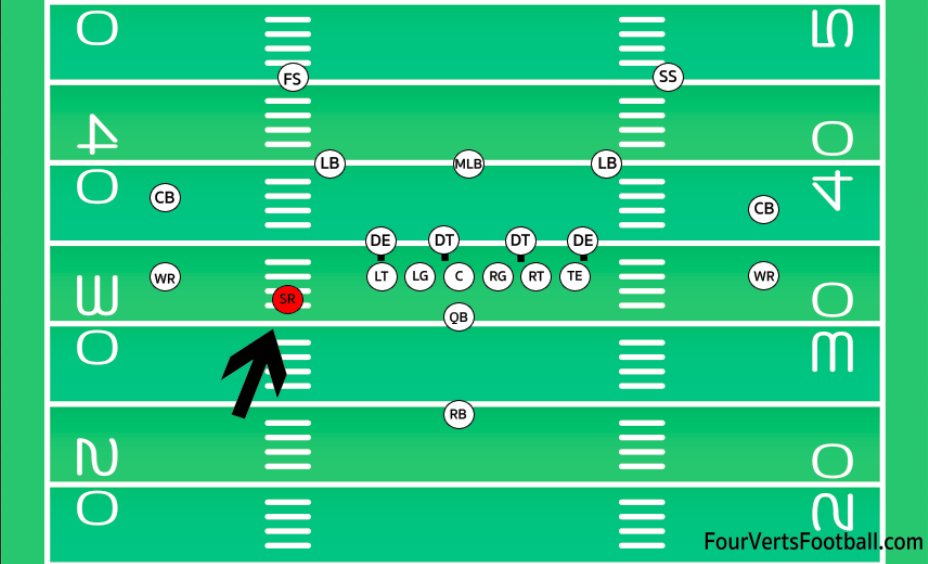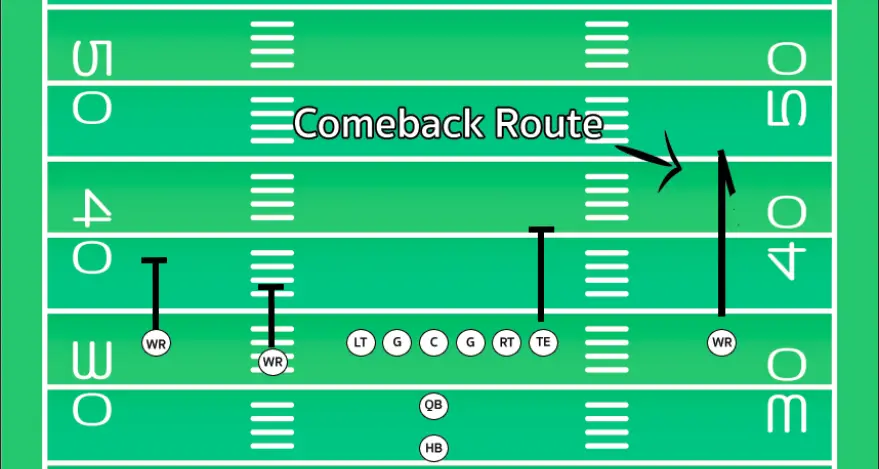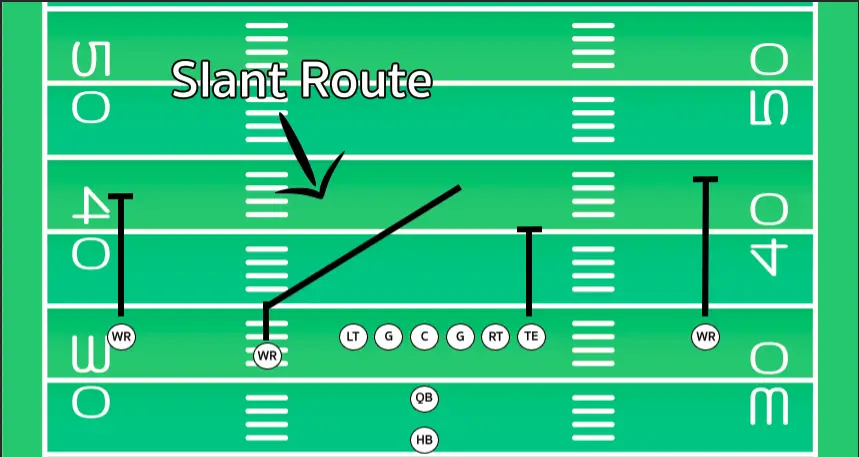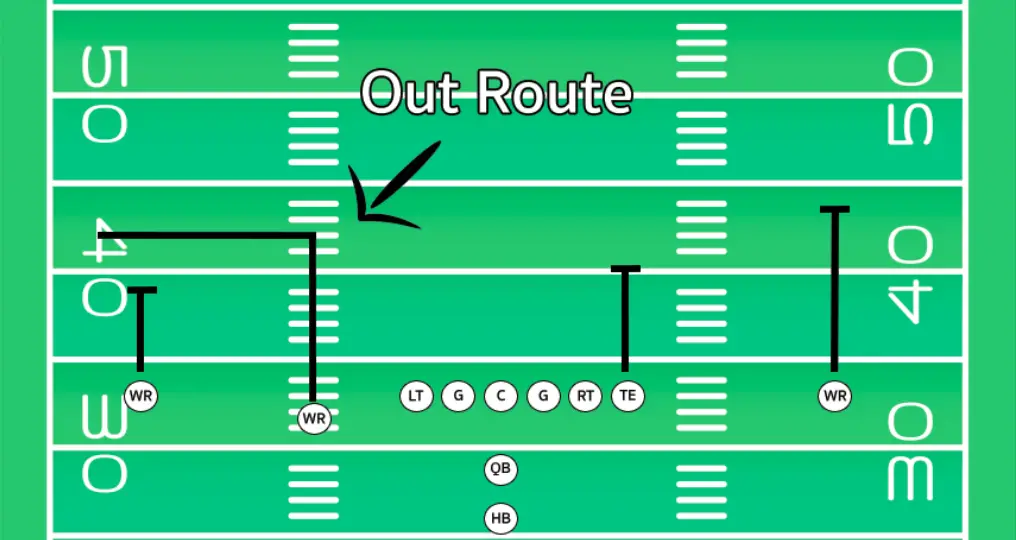A slot receiver in football is a receiving position that lines up in between the offensive lineman and the wide receiver . This position is responsible for catching short quick passes. These players are often of small stature and rely on quickness and agility to get open.
This article is going to explain the slot receiver position, how they differ from wide receivers and what their role is on the field.
What Is The Difference between a slot receiver and a wide receiver?

The main difference between slot receivers and wide receivers is where they line up. As you likely guessed wide receivers line up near the sideline while slot receivers line up in the slot.
The slot in football is the area of the field between the offensive line and the outside wide receivers.
There are several other differences between slot receivers and wide receivers but the most noticeable is their stature.
You will notice when watching football games wide receivers are often some of the tallest and fastest players on the field. While slot receivers don’t usually have great straight-line speed and are often 5’10 or shorter.
The reason for the different builds of these positions is that these players often use different strategies in order to get open.
Wide receivers tend to use straight-line speed and strength to get open. While slot receivers are more likely to use quick cuts or jukes to find open space on the field.
The result of this is shorter passes thrown to slot receivers while wide receivers are more likely to catch the ball deep down the field.
What is the Role of a Slot Receiver?
The role of a slot receiver is to get open for short yardage gains. These receivers utilize their quickness and dexterity to get open for easy underneath passes for their quarterback.
When playing a zone defense these receivers will often find a hole in between the zones where they will not be covered.
When it is man coverage a slot receiver will use his quickness to attempt to get away from their defender.




A slot receiver is valuable for short-yardage situations in which a team needs to pick up a few yards for a first down.
This is why you will often see slot receivers with stats lines to the tune of 6 catches for 45 yards. These players are not meant to take the top off a defense but rather to be that consistent safety valve for a quarterback.
This position is often targeted on third downs when the quarterback only needs a few yards for the first down. The sturdy hands and ability to get open quickly make this receiver a great option for quick passes in short-yardage situations.
Why Are They Called Slot Receivers?
The reason this position is called a slot receiver is because of where on the field this player lines up.
The “slot” is the area between the last offensive lineman on either side and the wide receiver.
Since this is the area where a slot receiver starts a play this why they have the “slot” portion of the name.
And much like a wide receiver, a slot receiver has the job of catching the football. Since this player plays in the slot and receives the ball through the air they are known as “slot receivers”.
Are Slot Receivers Fast?
For the most part slot receivers aren’t fast but they are quick. What we mean by this is they do not typically have great straight-line speed.
In the forty-yard dash, these receivers would not perform very well. Though they typically score very well in a three-cone drill.
This means these receivers are able to change direction and accelerate quickly. This is beneficial to the position as they are not often running at their top speed.
The main reason a receiver wants to have good top-end speed is so they can beat a defender over the top. Getting past a defensive back for a long pass is not something that a slot receiver usually does.
Since their passes are usually thrown underneath coverage these players will rarely get to their top speed at any point during a play.
This puts a lot more emphasis on this position’s ability to have a quick first step or two as this is what allows these players to get open.
What Routes do Slot Receivers Run?
These quick receivers typically run much shorter routes than other receivers. Dig routes, drag routes, and hooks are common routes run by slot receivers.
These routes are completed quickly and allow the quarterback a quick short-yardage option if needed.
What you will notice about all of these short routes is that the cut is going to come within a second or two of the ball being snapped.
Longer developing routes such as a post or corner are going to require more time for the quarterback.
Slot receivers thrive on quick passes which is why their route tree is usually limited to single-cut routes that the quarterback can read quickly.
For this reason, the slot receiver position will rarely get touchdowns as the bulk of their production comes as the team works their way down the field.

